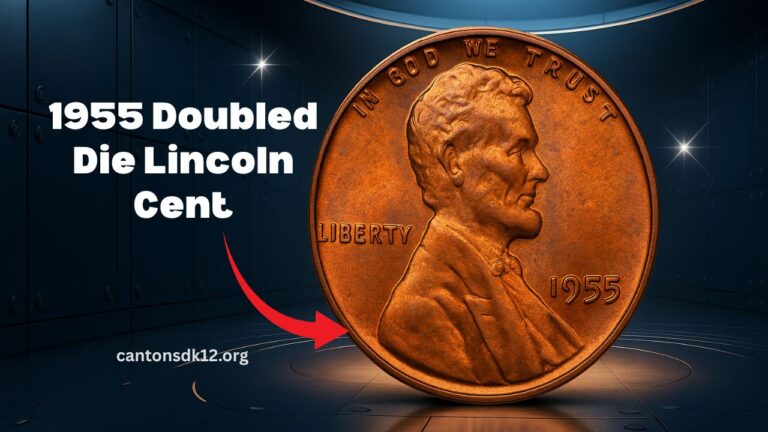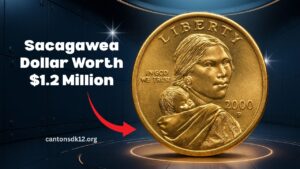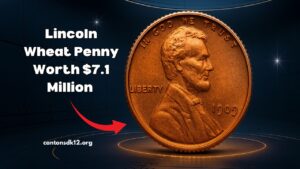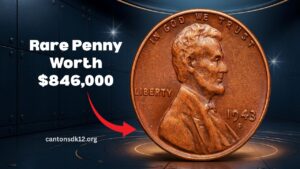The headline-grabbing claim that a 1955 penny sold for $775,000 has sparked tremendous excitement in the numismatic world.
While this amount would make anyone’s jaw drop, the truth is a bit more nuanced. This article dives into the real auction records, explains what makes the coin so special, clarifies why that $775,000 figure is highly unlikely, and teaches you how to spot a genuine piece.
What Is the 1955 Doubled Die Penny?
In 1955, a minting error occurred: the obverse (front) die was misaligned during production, causing dramatic doubling of key elements like LIBERTY, IN GOD WE TRUST, and the date.
This error is known as the 1955 Doubled Die Obverse (DDO)—one of the most famous and desirable Lincoln cents among collectors.
Roughly 20,000–24,000 of these coins entered circulation, mainly during a night shift at the Philadelphia Mint.
Most circulated examples show wear, while a relatively small number survive today in pristine “Mint State” condition.
The Real Auction Records
Contrary to sensational rumors, no verified sale of a 1955 DDO penny reached $775,000. Instead, the highest documented auction results fall in the six-figure range, typically between $100,000 and $125,000.
These record prices were achieved by exceptionally well-preserved, full-red Mint State specimens with superior eye appeal and certification.
Even so, that price range still outpaces the value of many precious metals by a wide margin—making the 1955 DDO penny, in the right condition, truly more valuable than gold.
Why the $775,000 Rumor Is Misleading
- Lack of verification: That number appears in sensational headlines or social media posts, but auction archives and reputable dealers do not support it.
- Condition is everything: Only top-tier, certified, full-red examples command premium prices—mid-grade coins sell for far less.
- Education over hype: Mislabeling, “look-alike” coins, and misunderstandings about grading can all fuel wild myths.
Highlights at a Glance
| Detail | Verified Reality |
|---|---|
| Error Variety | 1955 Doubled Die Obverse (DDO) |
| Location of Minting | Philadelphia (no mintmark) |
| Estimated Original Mintage | ~20,000–24,000 coins |
| High-grade Survivors | Rare |
| Top Auction Prices | Around $100,000–$125,000 for certified, full-red MS coins |
| Common Misidentification | “Poor Man’s Doubled Die” (deterioration, not error) |
How to Identify an Authentic 1955 Doubled Die Penny
- Visible Doubling: Look for bold, eye-catching doubling on LIBERTY, IN GOD WE TRUST, and the date—not subtle erosion or strain lines.
- Color Grade Matters: BN (Brown), RB (Red-Brown), and RD (Red) refer to color preservation. The RD grade, indicating uncleaned copper retaining its original red tone, commands the highest premiums.
- Certified Authentication: Only buy or sell certified coins (e.g., from respected grading services). This protects you against counterfeits and misgrades.
The 1955 Doubled Die Obverse penny is undeniably one of the most iconic and valuable U.S. cents ever minted.
While those dazzling $775,000 headlines make for great stories, the truth lies in verified auction data—with certified, high-grade specimens reaching solidly into the six figures, but not near that mythical mark.
If you believe you’ve found one, the smart play is to get it professionally graded. In top condition, this penny can indeed outperform gold—but mythic figures should be met with skepticism, not headlines.
FAQs
Has a 1955 doubled die penny ever sold for $775,000?
No. That figure is not documented in serious auction records. The highest confirmed sales range between $100,000 and $125,000.
How many genuine 1955 DDO pennies remain in top condition?
Only a scarce number of well-preserved, Mint State examples, particularly in full-red, high-grade condition, are known to remain.
What is a “Poor Man’s Doubled Die”?
That refers to die deterioration doubling, a common and minor phenomenon lacking collectible value. It’s not the same as the valuable doubled die error.




